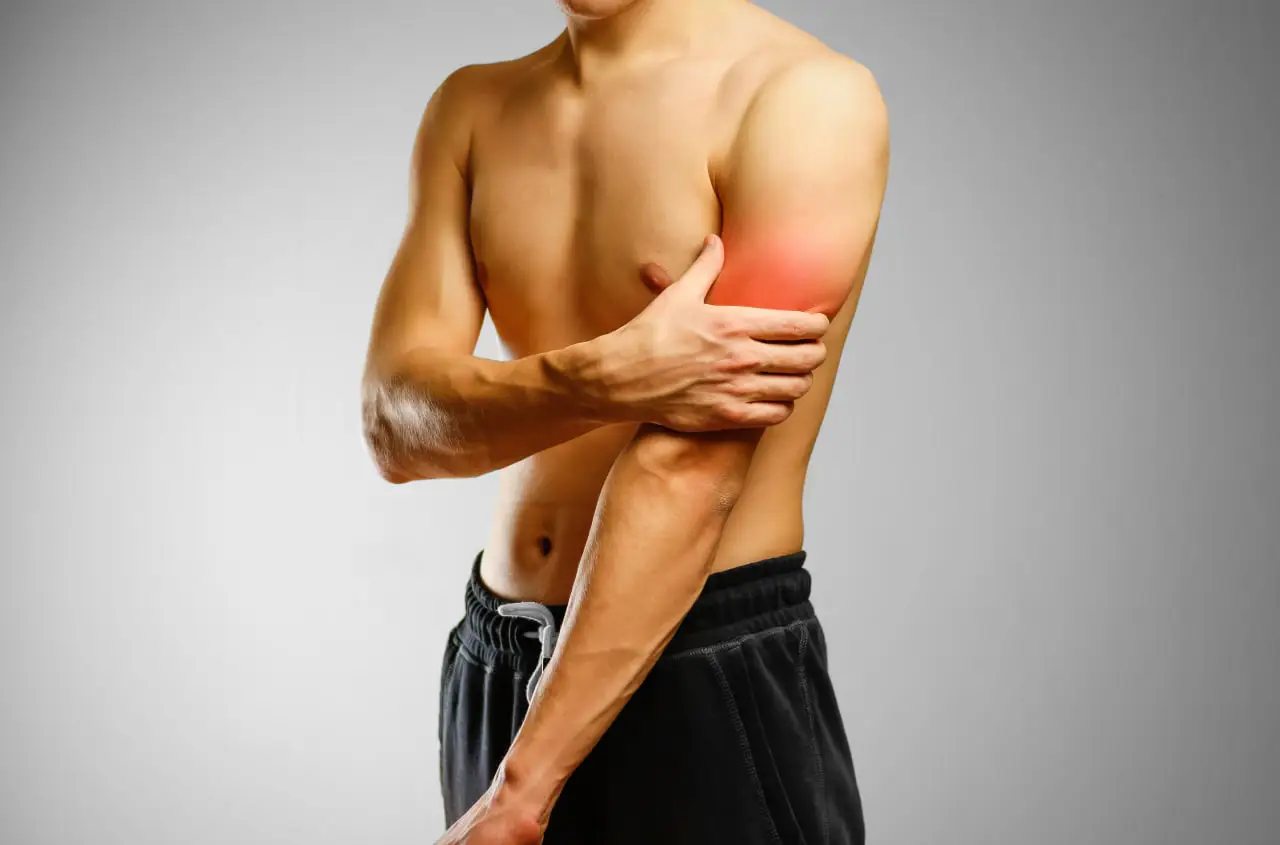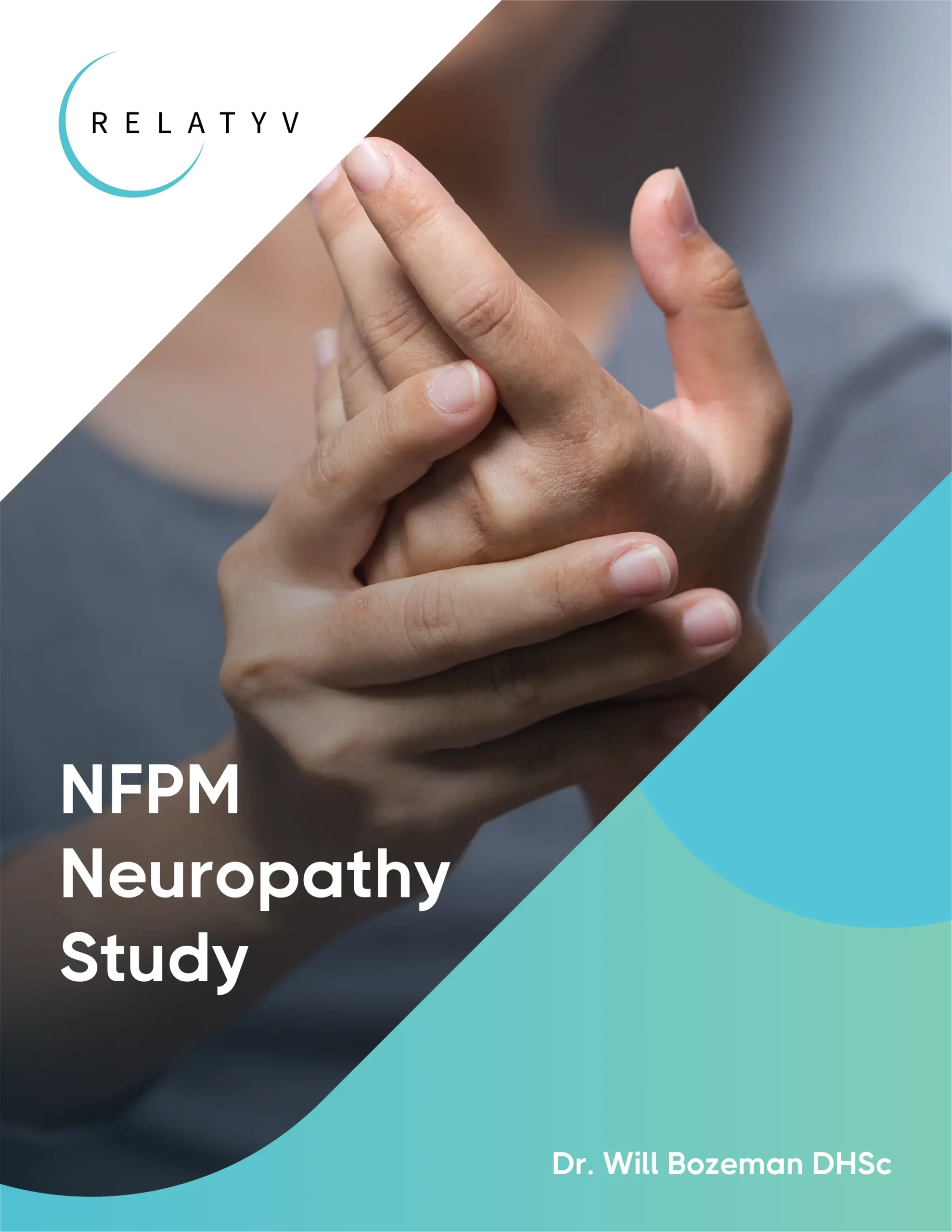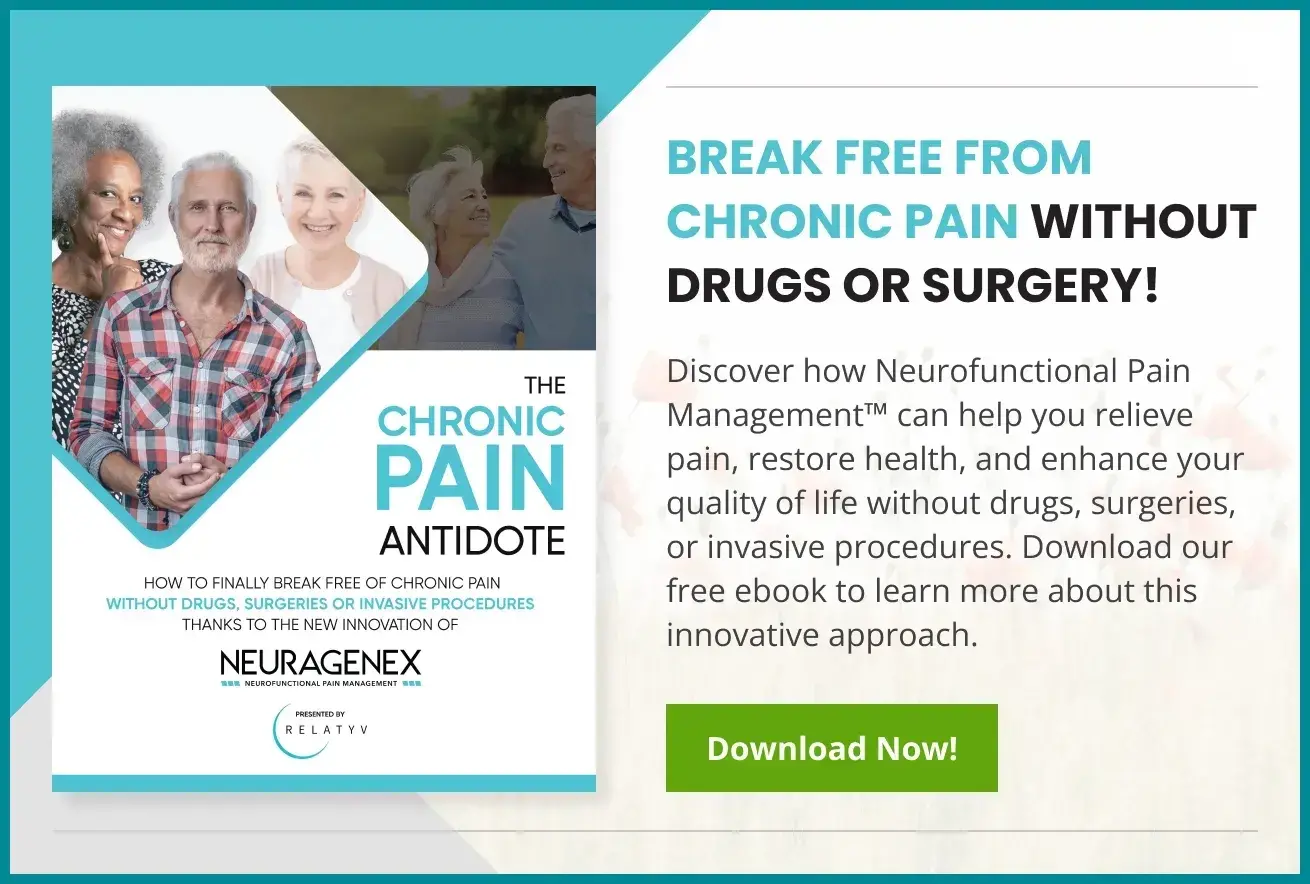Muscle Spasms

Beyond The Contractions: Muscle Spasm Vs. Twitch
Read More
September 28, 2023
Many muscular injuries and conditions, including muscle spasms, have long been treated with heat and cold therapy, but it can be difficult to know when to apply which therapy. In this comprehensive overview, we address the issue of whether to use heat or cold for muscle spasms as an effective way to find relief and promote healing.
Muscle spasms can affect any muscle of the body, ranging from slight twitches to agonizing cramps that have a major negative impact on your quality of life. We’ll talk about what triggers muscular spasms, when to apply heat or cold therapy, and how to successfully manage and avoid these frustrating episodes.
Additionally, we will highlight a few of the red flags that may point to an underlying issue and require you to consult a medical professional regarding your muscle spasms.
At Relatyv, we are aware of the difficulties in managing persistent muscular spasms. We hope to provide you with useful information so you can better understand this condition and make informed decisions regarding the management of its unpleasant symptoms.
Let’s begin with exploring the potential causes of muscle spasms and how they come about.
Muscle spasms can strike suddenly, developing into an uncomfortable inconvenience of uncontrollable muscle contractions. If they become a regular occurrence, muscle spasms may begin to interfere with your regular activities and possibly leave you wondering why they occurred.
For instance, your muscles can suddenly contract while you’re exercising, driving, or shopping. For some people, spasms might even interfere with their sleep. Let’s look at some of the most common causes of muscle spasms and the underlying reasons for these unpleasant sensations.
We all understand how important it is to be well-hydrated, but it is still frequently overlooked. Becoming dehydrated plays a significant role in causing muscle spasms as it leads to imbalances in essential electrolytes required for normal muscle contraction and function.
Your muscles can suddenly twitch or spasm as a result of dehydration. This is why it is important to grab the water bottle and rehydrate after sweating it out.
Similar to dehydration, an imbalance in electrolytes can arise from not replenishing vital nutrients with a balanced diet. Whether it is after strenuous physical activities or a big day of work, neglecting nutritious foods can lead to low levels of electrolytes, especially magnesium and potassium, calcium, and sodium, increasing the likelihood of muscle spasms.
Tense muscles may be less able to function normally and can become more prone to spasms, especially when abruptly placed under increased stress, such as exercise or heavy lifting. Inadequate stretching before or after physical activity can lead to muscle imbalances and ongoing tightness, triggering spasms.
Overexertion without proper rest and recovery can lead to muscle fatigue and spasms. Your muscles can begin to involuntarily contract if you push them beyond their normal limits without giving them time to rest.
Exercising in hot and humid conditions is a perfect storm for muscle spasms. Your body is at risk of becoming dehydrated through increased sweating and loss of bodily fluids. In addition, the heat itself may tighten muscles, increasing their susceptibility to spasms.
Another common trigger for muscle spasms is poor blood flow. Without appropriate blood flow, muscles are deprived of oxygen and nutrients, causing them to become dysfunctional and spasm. Restricted circulation can be caused by tight clothing, sitting for long periods of time, intense exercise, or certain medical conditions.
Due to the powerful mind-body connection, stress can manifest physically as muscular spasms. High amounts of physical or emotional stress can cause muscle tension, leading to spasms to occur throughout the body.
Even though exercise is crucial for our overall health, expecting your body to leap right into rigorous exercise without the correct preparation can cause overexertion, muscle strain, and, eventually, muscle spasms.
If there is no clear cause of your muscle spasms, you could have spontaneous nerve discharges. These nerve impulses have the potential to trigger abrupt involuntary contractions of the affected muscles. A medical evaluation could be necessary to determine the underlying cause of this nerve abnormality.
Now that we are clear on some of the main causes, let’s explore when using heat and ice can help you find relief from sudden or recurring muscle spasms.
Muscle spasms, both acute and chronic, can be a major source of discomfort. Cold therapy can be a helpful pain reliever for treating the distressing symptoms associated with spasms.
Applying ice to muscle spasms can be especially helpful in the first 72 hours after the discomfort begins to develop. Ice packs, frozen vegetables, or a cold gel pad can offer significant relief from muscle discomfort and spasms when wrapped in a thin towel and placed directly on the affected area.
As the affected area is quickly cooled down, the motor reflex loops that keep the muscles cramped and spastic are suppressed, relieving the muscle spasms.
When choosing ice treatment, it is advised to apply the cold compress to the affected area several times during the day for up to 20 minutes at a time. Exceeding 20 minutes might potentially exacerbate muscle tightness or escalate tissue inflammation.
As well as inducing numbness and pain relief to the affected area, ice therapy also helps to reduce inflammation and swelling, slowing down the nerve impulses directed to the injured region.
Although it is the polar opposite of cold therapy, heat can have a significant positive effect on spasms when utilized properly, especially when the spasms have been provoked by muscle tension and tightness. Heat reduces discomfort by promoting muscle relaxation, and improving blood circulation, alleviating the symptoms caused by muscle fatigue or insufficient stretching.
If your spasms are suspected to be associated with muscular injury, it’s best to wait three days before introducing heat therapy. This window of time enables the injury’s initial swelling and inflammation to go down, ensuring the optimal environment for heat therapy to be effective and preventing aggravation of inflammation and swelling.
Due to its lower tendency to cause dehydration, moist heat is desirable and is, therefore, a safer option than dry heat. Preferred sources of heat include moist heat pads and cloths, heat packs, warm baths, or showers.
Heat can reduce muscle tension and improve overall comfort when applied for 20-30 minutes. It is important that heat is applied safely and your skin is checked often to prevent blistering and localized swelling.
Since prevention is always preferable to treatment, let’s switch our attention to strategies to prevent muscle spasms.
Adopting preventative techniques that help protect against muscle spasms is a proactive way you can maintain an active life free of these discomforting episodes.
There are numerous strategies that can help you significantly reduce the likelihood of muscle spasms arising. Any or all of the following can be helpful:
If your muscle spasms are becoming a persistent, ongoing, and distressing issue, it’s important to consider seeking a professional opinion. In the next section, we will look at symptoms and warning signs that indicate it is time to seek the advice and intervention of your health practitioner.
Many muscular spasms are able to be effectively managed with self-care and heat and cold therapy, but in some cases, a medical professional’s evaluation and assessment are required.
Knowing the symptoms that call for expert help is essential to taking care of your health and well-being. It is advised to consider seeking medical advice if you have any of the following symptoms accompanying your muscle spasms:
If your muscle spasms are disrupting your daily activities with intense pain and discomfort, it could be a sign of an underlying condition or muscular disturbance that needs medical attention. Consult your doctor to get a complete evaluation and learn about the potential therapies to ease the discomfort of your severe spasms.
Your muscular spasms should be examined for a more serious cause if there is any localized swelling, tingling, or numbness throughout the affected area. These symptoms can be a sign of nerve compression, inflammation, or other potential causes that require a comprehensive medical assessment.
If you notice that the skin around where your muscle spasms occur has any changes, such as a rash, redness, edema, or discoloration, it’s essential to consult a healthcare professional. Skin alterations can indicate underlying issues, such as an allergic reaction or infection, that need to be promptly addressed.
Our bodies often communicate valuable clues about the status of our hydration and electrolyte balance. Indicators of dehydration or a lack of vital electrolytes and minerals include persistent changes in urine output, its color, the amount and smell of sweat, and even physical sensations like a sour taste in the mouth or dryness in the mouth and eyes.
By seeking medical advice, you can make sure that these symptoms are appropriately evaluated and, if necessary, that the right actions are implemented to restore the balance of electrolytes and hydration.
In order to assist you in maintaining ideal levels and avoiding muscular spasms and the associated discomfort, your doctor can offer specific recommendations.
Remember, your health and well-being comes first, and seeking medical assistance can provide you with peace of mind. Gaining an accurate diagnosis and customized treatment strategies can help alleviate your muscular spasms in addition to any of these alarming symptoms.
Additionally, consulting a healthcare provider ensures that any underlying conditions are identified and addressed appropriately, allowing you to take proactive steps toward effective relief and improved quality of life.
When to apply heat or cold therapy for muscle spasms depends on a few factors, including the underlying cause and your personal preference. Both treatments can be beneficial, and understanding when to use each can help you find relief from pain and discomfort associated with the disturbing symptoms of muscle spasms.
You can reduce the frequency and severity of these uncomfortable episodes if you practice mindful exercise, stretch, and stay proactive in preventing muscular spasms. Always remember that for complete care and long-term well-being, it is essential to seek expert assistance when necessary.
At Relatyv, we’re dedicated to magnifying your quality of life through specialized Neurofunctional Pain Management techniques. Our expertise lies in nerve stimulation pain relief, providing innovative solutions to individuals dealing with muscle spasms and related discomforts.
We are aware that every person has a distinct experience with muscle spasms, and our customized strategies are designed to meet your individual needs.
Empower yourself with knowledge and explore the possibilities of a more comfortable and active life with Relatyv. Your journey to pain relief starts with understanding your body and making informed choices.
About the Author
Will is a healthcare executive, innovator, entrepreneur, inventor, and writer with a wide range of experience in the medical field. Will has multiple degrees in a wide range of subjects that give depth to his capability as an entrepreneur and capacity to operate as an innovative healthcare executive.
Share on Social Media




You can see how this popup was set up in our step-by-step guide: https://wppopupmaker.com/guides/auto-opening-announcement-popups/
You can see how this popup was set up in our step-by-step guide: https://wppopupmaker.com/guides/auto-opening-announcement-popups/
Neurofunctional Pain Management Overview
IV Therapy
Symptoms
Conditions Treated
Treatments
Articles by Category
Locations
Colorado
Wisconsin
Georgia
Hiram
Lawrenceville
Marietta
Powder Springs
Texas
Waco
Victoria
Illinois
Buffalo Grove
New Lenox
St. Charles
Arizona
Tucson
Waddell
Arlington
Avondale
Buckeye
Superior
Mesa
Palo Verde
Morristown
Tempe
Chandler
Anthem
Eloy
Florence
Fort McDowell
Phoenix
El Mirage
Coolidge
Gilbert
Arizona City
Casa Grande
Casa Blanca
Aguila
Sacaton
Apache Junction
Kearny
Stanfield
Goodyear
Litchfield Park
Alabama
Arkansas
California
Florida
Idaho
Louisiana
Michigan
Rhode Island
Minnesota
Nevada
New Jersey
New Mexico
North Carolina
Ohio
Pennsylvania
South Dakota
Tennessee
Virginia
Washington

